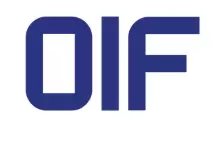OIF has launched a new Energy Efficient Interfaces (EEI) Framework project focused on the next generation of low power optics, also referred to as “Linear” or “Direct Drive”, for data center networking, artificial intelligence (AI) training/machine learning (ML) and disaggregation applications.
“With an increasing industry-wide demand, particularly from data center operators, the focus on energy efficiency is more important than ever,” said Rob Stone, Meta Platforms and OIF Board Member. “Addressing this need head-on, the new OIF framework will explore energy-efficient interfaces for the optical interconnects of next-generation data centers that will support the performance scaling of current internet applications and enable groundbreaking AI-driven applications and immersive experiences.”
Through this project, OIF will explore and study energy-efficient links with less than fully retimed interfaces, which have the potential to unlock a multitude of benefits for diverse stakeholders. The objective is to identify critical applications and their requirements for next-generation electrical and optical links, including die-to-die, co-packaged, near-packaged and pluggable solutions.
The project will conduct a thorough study to identify critical issues associated with these links and identify opportunities to pursue interoperability standards. The findings of the study will be outlined in the Framework Document, which will serve as a technical white paper for the project.
“A primary goal of this project is to identify new opportunities for interoperability standards, laying the groundwork for potential future collaborations at OIF or other standards organizations,” added Jeff Hutchins, OIF Board Member and Physical & Link Layer (PLL) Working Group Co-Packaging Vice Chair and Ranovus.
“OIF is always listening to the wants and needs our members bring forward, and this project start proposal authored by several industry leading companies directly addresses a need that exists across many IT applications,” said Nathan Tracy, OIF Co-chair of the Market Awareness and Education committee and TE Connectivity. “This one project has the potential to significantly benefit several critical industry applications.”
Additionally, Yi Tang, Cisco Systems, was recently appointed as PLL Working Group Electrical Vice Chair.


















